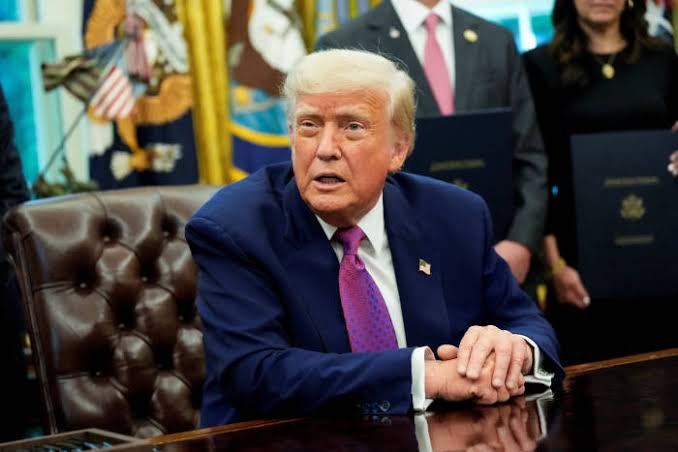
President Donald Trump’s unrelenting tariff strategy appears to be bearing fruit, with a breakthrough trade deal now inked with Japan. After months of stalled negotiations, Japan under considerable pressure has agreed to terms that many now view as a significant, if narrow victory for the White House.
From the outset, the United States had expressed optimism about striking a deal, yet progress remained elusive. Now Japan has emerged with what some analysts describe as the “least damaging” arrangement among countries with trade surpluses with the U.S. Though it faces a general tariff rate of 15%, higher than the UK’s 10%, the distinction lies in Japan’s surplus, which has been a point of contention.
Negotiations had not been smooth U.S diplomats noted an unusual level of frustration from typically reserved Japanese officials.
Tokyo was clearly playing hardball. In fact, Japan’s finance minister at one point suggested that the country’s $1.1 trillion in U.S. Treasury holdings the largest globally could be wielded as leverage.
This veiled threat turned real when rumours emerged of Japanese hedge funds selling U.S. bonds after Trump’s Liberation Day tariff announcement in April. The resulting market tremors underlined just how consequential the trade standoff had become.
The new U.S Japan deals lands on the same day Tokyo hosted leaders from the European Union, raising eyebrows. There had been speculation about a joint retaliatory front between Japan, the EU, and Canada, which this agreement effectively derails. Meanwhile, EU powers like France and Germany are intensifying their rhetoric especially around potential tech-sector retaliation but may now question whether they too should pursue bilateral compromises.
While Japan has shielded some of its agricultural sectors, it has agreed to increase U.S. rice imports. On the automotive front, little is expected to change consumer sentiment, as large American cars remain unpopular in Japan. However, Japanese firms have pledged to invest up to half a trillion dollars in the U.S a significant win for the Trump administration.
What pushed Japan to agree now, rather than wait for broader international reactions to Trump’s sweeping tariffs scheduled for August? Domestic political instability may have played a role, alongside a pragmatic desire to avoid the threatened 25% tariffs.
Tariffs Boost government revenue but Raise Consumer Costs
Beyond the geopolitical ripple effects, tariffs are now adding a hefty boost to the U.S. Treasury. With revenues exceeding $100 billion so far this year now forming about 5% of total federal income they mark a sharp jump from the usual 2%. Treasury Secretary Scott Bessent projects an annual total of $300 billion, a striking figure despite being dwarfed by income tax revenue.
Yet this windfall comes with a hidden cost. American consumers are absorbing much of the impact through higher prices on imported goods. Although officials previously argued that a stronger dollar could offset this burden, the currency has instead dropped 10% against a global basket adding to inflationary pressures.
Bank of England Governor Andrew Bailey recently noted a dramatic shift the dollar is no longer behaving as a traditional haven. Traders are actively hedging against further devaluation, reducing their dollar exposure. Some market watchers suspect this was intentional part of a broader strategy to boost U.S. manufacturing competitiveness, particularly in struggling industrial regions.
Ironically, Trump’s aggressive tactics may be bolstering rival China’s image as a stable trading partner, despite ongoing U.S.-China tensions.
Nonetheless, with Japan now on board, the Trump administration is poised to tout this as a critical win a direct rebuttal to critics who argue the President rarely follows through on threats. Whether this opens the door to more deals or deeper economic uncertainty remains to be seen. The trade war may be far from over, but the battlefield has undeniably shifted.